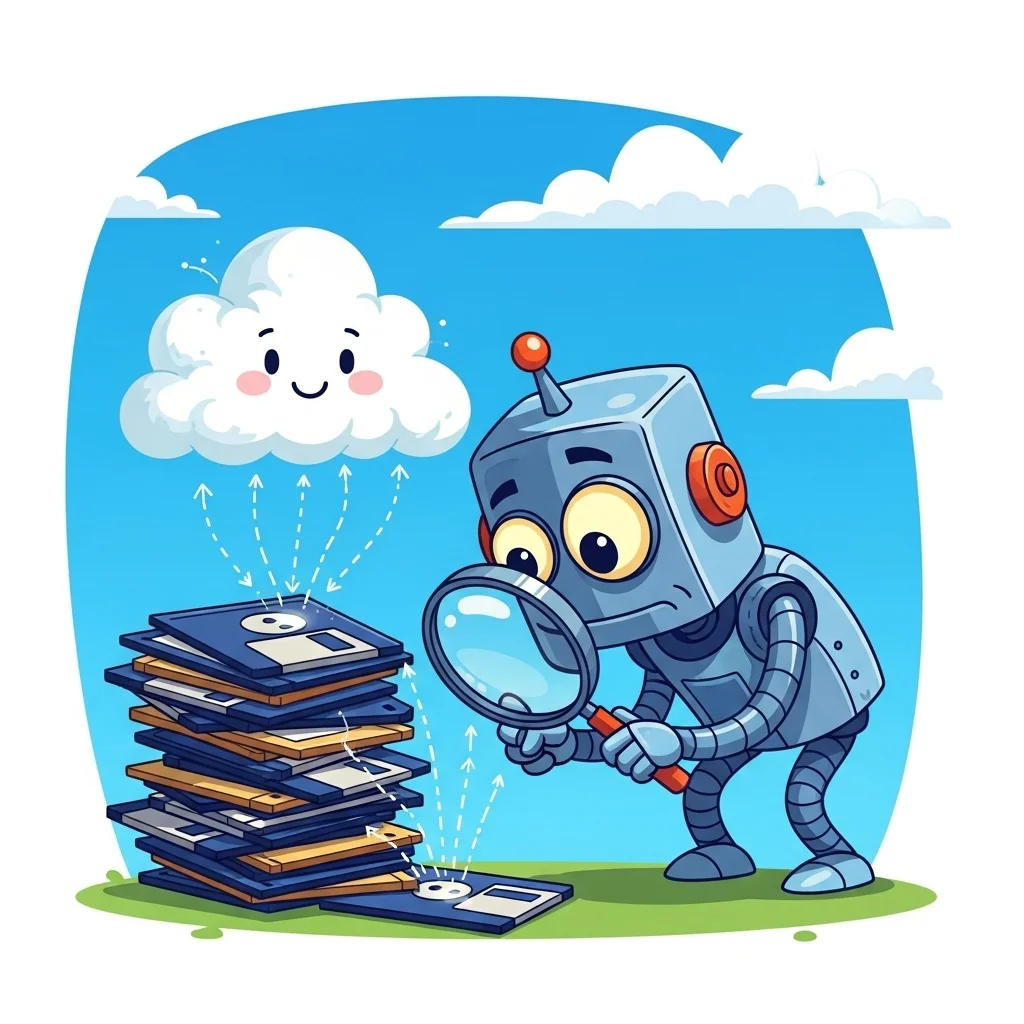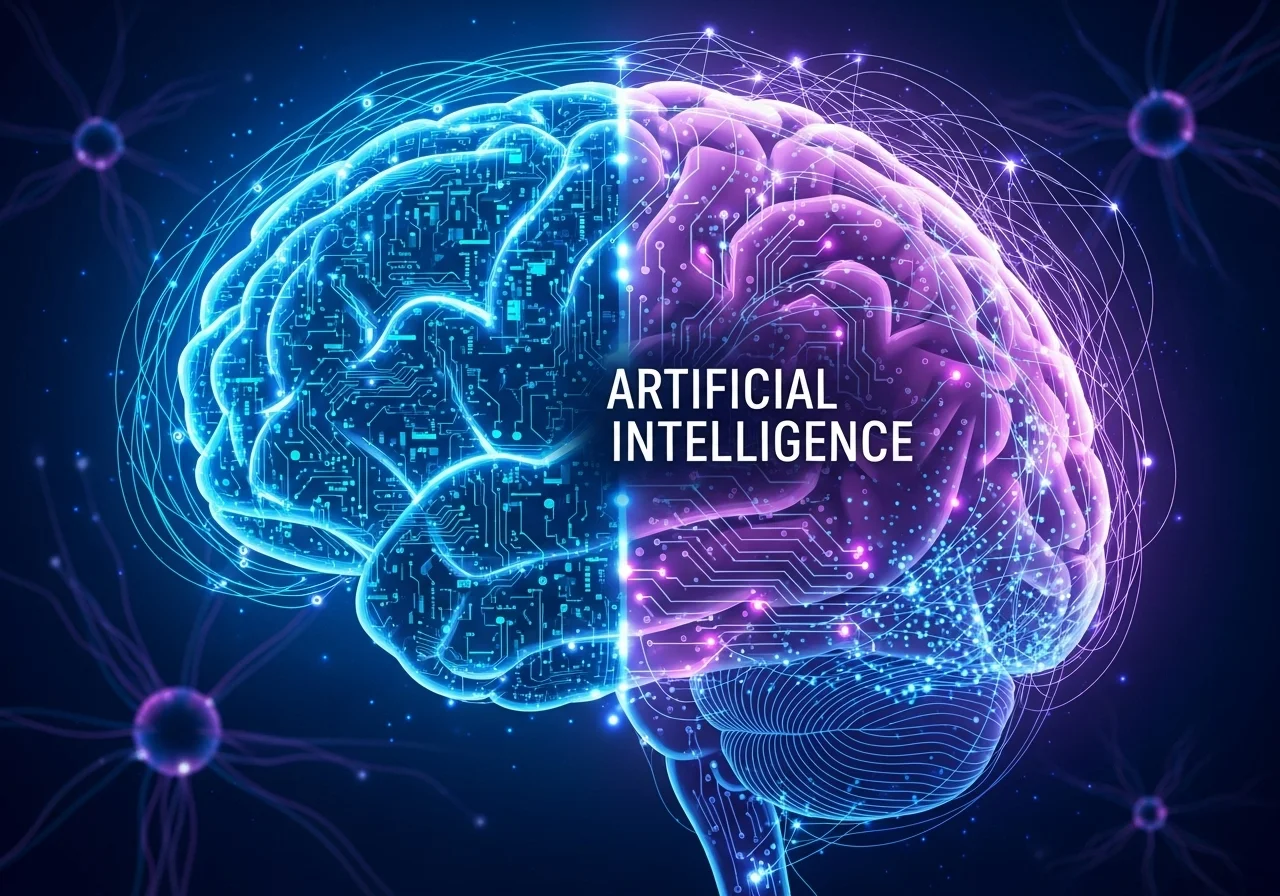What is Artificial Intelligence (AI)?
Artificial intelligence (AI) is an umbrella term for systems or machines that imitate human cognitive functions such as learning, reasoning, problem-solving, perception and language comprehension. The technology enables computers to generate insights from data and make decisions with minimal human input.
Core components
1. Machine learning
Machine learning (ML) is the practical heart of modern AI. Algorithms learn to recognise patterns in historical data and use this knowledge to make predictions or decisions. Common approaches include:
Supervised learning (with labelled data)
Unsupervised learning (clustering and dimensionality reduction)
Reinforcement learning (learning through reward and penalty mechanisms)

2. Deep learning
Deep learning is a subset of ML that uses multi-layer neural networks. With hundreds to thousands of hidden layers, the system can detect complex patterns in text, images, audio or video. Deep learning underpins speech recognition, image classification and modern generative models.
3. Generative AI
Generative AI creates new content (text, code, images, video) based on a prompt. The most widely used model architectures are:
Transformer models (e.g. GPT-5, Claude Opus 4.1)
Diffusion models for image generation
Variational Autoencoders (VAEs) for output variation

4. Symbolic AI
A classical approach in which experts encode rules (if-then statements) to enable logical reasoning. Symbolic AI is highly explainable but less flexible than data-driven techniques.
Types of AI
Narrow AI: focused on a single specific task, such as email spam detection.
General AI (theoretical): possesses the broad cognitive abilities of a human.
Agentic AI: multiple AI agents autonomously collaborate to achieve a complex goal.
Applications
Sectors where AI has already become indispensable:
Sector | Example Application |
|---|---|
Healthcare | Image interpretation in radiology |
Finance | Fraud prevention on transaction data |
Industry | Predictive maintenance of machinery |
Retail | Personalised product recommendations |
Government | Text analysis in legislative research |
Benefits
Automation of repetitive tasks
Faster and more accurate decision-making
Improved customer service (24/7 availability)
Reduction of human errors
New insights from large, unstructured datasets
Limitations and risks
Bias in training data can lead to discriminatory outcomes
Lack of transparency in deep learning (black-box problem)
High computing power and energy consumption required for model training
Security risks in autonomous systems
Legal liability and ethical issues
Regulations and standards (2025)
Since February 2025, parts of the European AI Regulation (AI Act) have come into force. The law:
Classifies AI systems as prohibited, high-risk, limited-risk and minimal risk.
Imposes transparency and documentation requirements on high-risk systems.
Sets penalties for infringements (up to 7% of global turnover).
Organisations must therefore conduct risk analyses and, where necessary conformity assessments before rolling out AI applications.
Recent technological developments
The launch of GPT-5 and Gemini 2.5 increased the context window to 250k tokens.
Multimodal models combine text, images and audio within a single architecture.
Retrieval-Augmented Generation (RAG) improves accuracy by consulting external knowledge sources in real time.
Agentic frameworks coordinate multiple specialised models for complex workflows, for example automated software development or supply-chain optimisation.
Best practices for implementation
Define clear use cases with measurable goals.
Collect representative, legally compliant datasets.
Start with a pilot, evaluate for fairness, accuracy and robustness.
Document model choices and data flows for audit purposes.
Implement human-in-the-loop mechanisms for critical decisions.
Continuously monitor for drift, performance and ethical implications.
Sources and further reading
IBM – What is Artificial Intelligence? (2025) https://www.ibm.com/think/topics/artificial-intelligence
Encyclopædia Britannica – Artificial Intelligence (last update: 7 Oct 2025) https://www.britannica.com/technology/artificial-intelligence
European Commission – Guidelines on AI System Definition (6 Feb 2025) https://digital-strategy.ec.europa.eu
Dutch Data Protection Authority – Explaining the AI Regulation (2025) https://www.autoriteitpersoonsgegevens.nl
This knowledge base article provides an overview of the definition, core technologies and current developments surrounding artificial intelligence as of 2025.

